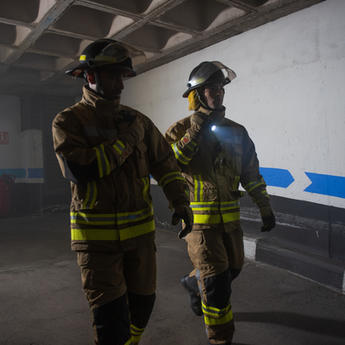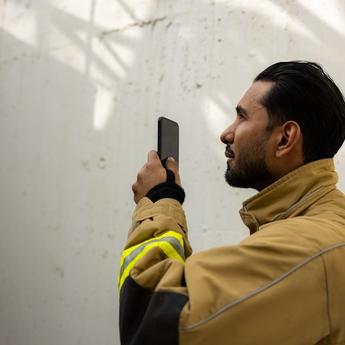Across the world, public safety agencies are taking advantage of new data services, such as video, data analytics and online field reporting. Compared with conventional voice, these services demand more communications capacity, best provided by 4G/5G broadband networks. Agencies can make the move to mission-critical broadband in different ways. Which is the best for you? For some ideas, we look at three approaches from Finland, Mexico and China.
Public safety agencies everywhere face new challenges. These range from the impacts of climate change such as fires and extreme heat, to more sophisticated organized crime, to cyber threats, to growing military and political unrest.
Agencies must deliver effective responses without significant increases in resources, which typically means they must:
- improve operational efficiency
- shorten response times
- improve the safety of first responders and citizens
- focus more sharply on demanding tasks in the field.
Agencies need more modern ways of working enabled by mobile broadband. Yet simply replacing one core communication technology with another will not meet the needs. That’s because the smooth adoption of new communication technology must also take account of how people work, as well as re-using existing investments as much as possible.
There are two principal ways to implement secure broadband public safety services:
- building a network dedicated to critical communications, or
- using a network shared with other users.
Let’s look at how the shared-network model works in practice with three real examples, from Finland, Mexico and China. In each case, one or more MNOs or specialized Secure Mobile Virtual Network Operator (SMVNO) is involved. The same physical network is shared by users with different needs. Sharing the most expensive part of the 4G/5G network – the radio network – saves substantial costs and simplifies network maintenance, with costs shared by several parties.
Each example begins with an existing narrowband TETRA / Tetrapol network, which creates an essential requirement for interoperability and seamless communication between narrowband and broadband users. Interoperability between networks in all these cases is based on the Agnet from Airbus.
Virve 2 – Finland's new generation public safety network
Finland’s Virve nationwide TETRA network is used by multiple organizations, such as police, fire services, defence forces and social and health services. Enterprises, such as rail traffic operators also use the network. Owned and operated by Erillisverkot Group, the network covers about 96% of the country. Some 51,000 users handle two million group calls and 75 million short data messages every week.
Although the Virve network runs well, TETRA technology’s limited data bandwidth does not support modern applications. In 2018, Erillisverkot initiated Virve 2, a project to deploy public safety mobile broadband services based on 3GPP standards and 4G.
The Virve 2 network uses a shared network model. A primary MNO, Elisa, shares its radio network between its regular customers and Virve 2 users. Coverage will be comparable with the existing Virve network, with options for expanding Elisa’s broadband coverage and capacity, for example to national roaming and possibly even satellite services in the future.

Public safety users enjoy prioritized services through 4G/5G’s quality of service, prioritization and pre-emption (QPP) functions. Public safety professionals’ communications must be prioritized to help guarantee the service is available for the most important users – even when the network is experiencing heavy traffic.
Virve TETRA and Virve broadband services will both be available during the migration period starting in 2023. The project aims to ensure that group communications services operate between TETRA and broadband services when users have different devices and technologies. This is achieved with the Agnet solution from Airbus, which is fully integrated into the Airbus TETRA system and broadband services.
In the future, Virve 2 will include services based on new technologies such as Internet of Things (IoT), Artificial Intelligence (AI), Augmented reality (AR), drones and robotics. The target is to improve operational efficiency and the work with other users. The safety of first responders working in the field is also of paramount importance.
Learn more about the Virve 2 project – read the customer story.
State of Querétaro – Mexico’s pioneering case
Mexico’s Quéretaro state authorities strive to keep a lid on crime. Lower crime means safer citizens, which builds trust between the state and its two million citizens. Like most authorities, Querétaro state sees communications as essential.
The state wants to build on the success of its National Radio Communication Network (RNR / IRIS) based on Tetrapol technology, which supports 200,000 Federal, state and municipality users across the country’s 32 states. Querétaro state also sees opportunities for implementing new, efficient capabilities through more advanced communications.
A major part in realizing these ambitions is the MXLINK service from Airbus. MXLINK is a Secure Mobile Virtual Network Operator (SMVNO) service incorporating the network capabilities of Red Compartida, Telcel and AT&T. The geographical coverage exceeds that of a single operator and today covers more than 92% of the country's population. The MXLINK service, in turn, helps ensure the security of operations and improves public confidentiality.
Thanks to Agnet, MXLINK also offers interoperability with the existing IRIS Tetrapol network to ensure long term support for Tetrapol services which will continue to be used for mission-critical voice and data.

Adopting new technology is important to help Querétaro state meet its objectives. As well as their Tetrapol radios, many officers use smartphones and tablets. With Agnet, these officers can communicate securely with each other, regardless of the device they are using. They can securely share encrypted images, videos and documents with each other and other authorities. This improves service efficiency and public confidence, as well as enabling new devices and apps to be deployed quickly.
Using tablets, Querétaro police officers can complete crime reports and file them with the Attorney’s Office directly from the incident scene. This has led to a 35.5% increase in the filing of crime reports over the last 2.5 years, leading to one of the highest rates of solved incidents in Mexico.
Public trust is boosted because, unlike other states that require citizens to visit a police station to file a report, taking up a whole shift, filing in Querétaro takes only 50-60 minutes. This allows officers to deal with more incidents and provide better protection for people and property. The tablets are provided with secure connectivity by MXLINK and give police officers a better way to record and share evidence securely, providing improved information for the courts.
To help prevent crime, the state’s analysis unit uses reporting app data to help see where and when most incidents happen, enabling resources to be focused to prevent them.
Querétaro state is also developing new apps to enhance operations, as well as planning to take patrol cameras into use. Integrated with Tactilon Agnet, officers can start communications directly with civic and criminal judges, improving situational awareness and saving time.
Learn more – read the customer story.
Handpicked related content
Download this success story: "Keeping two million citizens safe in Querétaro, Mexico". You will learn what’s behind one of the world’s most exciting and modern command centre’s success.
Guangzhou’s network in China – APAC’s first hybrid network
Guangzhou authorities in China are reaping the benefits of the first hybrid public safety network in the APAC region and the first to connect TETRA with 5G.
Guangzhou's network includes the world’s largest city-wide TETRA network, complemented by mobile broadband services delivered over three commercial operator 4G/5G networks, as well as satellite technologies. The network serves more than 50,000 users from more than 70 public safety and other critical organizations in the city of over 18 million inhabitants.
Built in 2017, the hybrid network complements TETRA with 4G/5G broadband services from three MNOs. Network coverage has increased and TETRA and smartphone users can now communicate seamlessly with each other, thanks to the capabilities of the Agnet solution.

The network runs as a CO-CO model (Company Owned Company Operated, Government purchase service) involving a commercial MNO (Guangdong Telecom, China Telecom’s branch in the province) and the Guangzhou government. The model helped achieve rapid network deployment and high user satisfaction.
The Guangzhou network handles more than a million calls per day by users on the ground, above ground and underground. The hybrid network’s indoor and outdoor coverage is supported by TETRA base stations, and Air-to-ground base stations to provide connectivity for helicopter teams, as well as hundreds of TETRA base stations underground to cover all 20 lines in the metro transport system.
An important part of hybrid services are devices. In Guangzhou's case, Tactilon Agnet enables 4G/5G smartphone users to seamlessly communicate with TETRA users. Guangzhou authorities also use body-worn devices that support video recording, photo shooting and communication services with an integrated Tactilon Agnet application.
Learn more about the Guangzhou’s case – read the customer story or watch this video:
Handpicked related content
Maintaining the existing system alongside the new one is often called the hybrid approach. What does the hybrid approach mean when building broadband? Learn more and download this paper: "How to minimize risks when introducing mission-critical broadband".
Planning on building your public safety broadband and don’t know where to start? If so, download the white paper “How to plan your migration from TETRA to 4G/5G mission critical broadband.”
You’ll learn how public safety organizations and enterprises can benefit from mission critical broadband now. You’ll also discover the opportunities and the risks, the do's and dont's – and see how your broadband migration could be a success. Download the white paper now.
If you need help getting started with TETRA/Tetrapol and broadband, the Airbus team is available to help. Take the next easy step – tell us a little about you:






